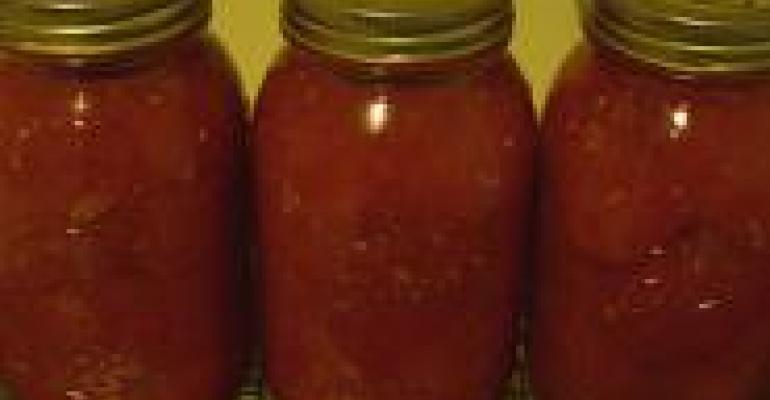 Can food, that is. And in pretty impressive quantities, too. According to the
Nielsen Co., unit sales for canning and freezing supplies are up 18% this year over last.
Wegman’s, meanwhile — what
can’t they do? — has seen a 40% increase in canning and freezing products, according to recent column by senior VP
Mary Ellen Burris.
Can food, that is. And in pretty impressive quantities, too. According to the
Nielsen Co., unit sales for canning and freezing supplies are up 18% this year over last.
Wegman’s, meanwhile — what
can’t they do? — has seen a 40% increase in canning and freezing products, according to recent column by senior VP
Mary Ellen Burris.
Leave it to the recession to revive a fading culinary tradition. Canning, of course, saves money because you’re able to cut food waste and buy in bulk. It’s synonymous with good health, too, since the whole point is to keep fresh those seasonal, perishable items that would otherwise spoil.
Canning also requires care, patience and plenty of time, and that’s why the practice had gone out of style in this age of convenience. I’ve never canned, but I can remember sitting at the kitchen table while my mom made strawberry jelly. She’d pour around 40 jars, and one by one she’d set them out and I’d hear the pop of the vacuum seal locking as they cooled.
I decided to learn a bit more about the process. Apparently there are two methods — one for acidic foods like citrus fruits and tomatoes, and one for vegetables and other low-acid foods. Jars with acidic foods you submerge into a boiling water bath, while the low-acid foods, which contain a different, more resilient form of bacteria, need to go through a pressure canner.
This youtube video is helpful, and I hear the Ball “Blue Book of Preserving” is a must-have — the canning Bible, many say. Category leader Ball also makes a Fresh Preserving Kit that’s geared toward beginners and sells well, as well as all the jars, lids, funnels and other accessories.
(photo courtesy of benketaro)

